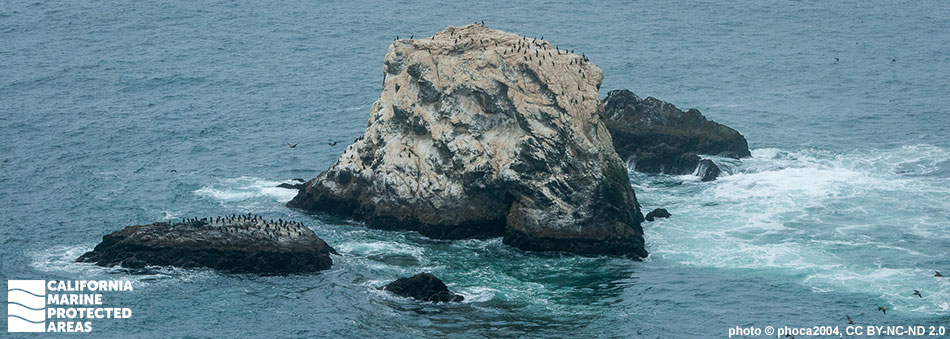
Overview
Egg (Devil's Slide) Rock to Devil’s Slide Special Closure is located about 15 miles south of the Golden Gate Bridge and two miles south of Pacifica State Beach. The special closure was established to protect seabirds that use Egg Rock and a group of small offshore sea stacks, and the area that surrounds them. It prohibits any boating or access closer than 300 feet, including transit between the rock and the mainland, year-round. While Egg Rock is closed to visitors, a trail system along old Highway 1 on the rocky promontory offers scenic vistas of the special closure.
Egg Rock is home to a breeding colony of common murres that was restored following the 1986 Apex Houston oil spill. Although it is only a small piece of protected land and sea, Egg (Devil’s Slide) Rock to Devil’s Slide Special Closure is important not only for the common murre, but also for Brandt’s cormorants that nest here, and brown pelicans, ashy storm-petrels, and other seabirds that roost in the special closure.
Regulations
Boating, access, and other specific activities are restricted. No person except employees of the California Department of Fish and Wildlife, United States Fish and Wildlife Service, U.S. Bureau of Land Management, National Oceanic and Atmospheric Administration, or United States Coast Guard during performance of their official duties, or unless permission is granted by the California Department of Fish and Wildlife, shall enter the area.
Additional restrictions related to transit exist. See the link below for details.
California Code of Regulations Title 14, Section 632(b)(64)(opens in new tab)
Quick Facts
MPA size: 0.05 square miles
Depth range: 0 to 10 feet
Habitat composition*:
- Rock: 0.09 square miles
- Sand/mud: 0.02 square miles
*Habitat calculations are based on three-dimensional area and may exceed the total MPA area listed above.